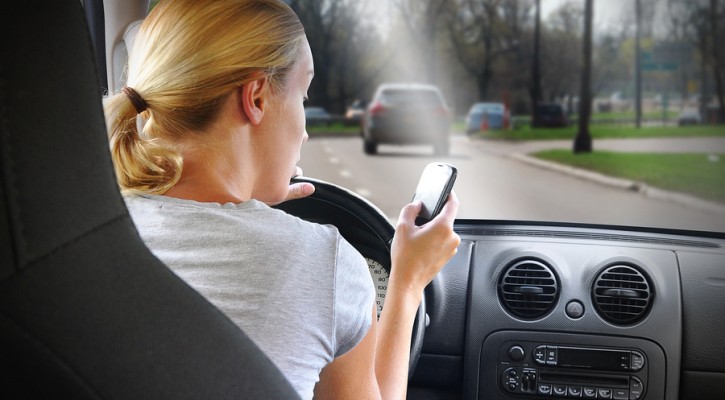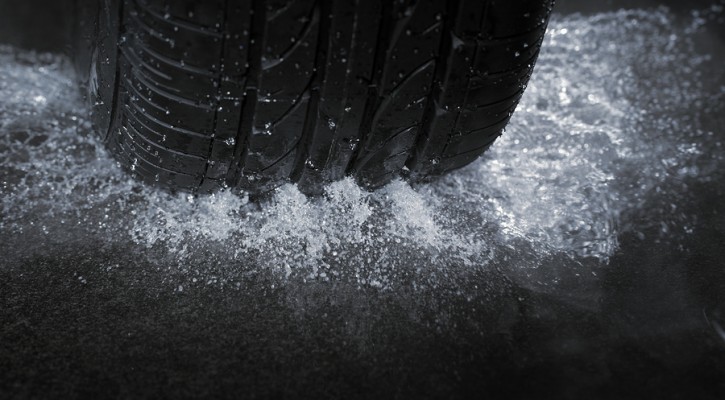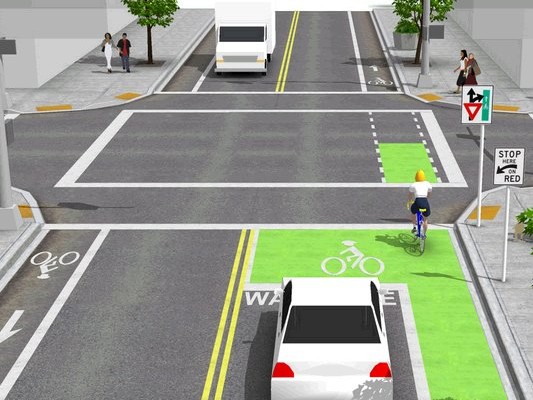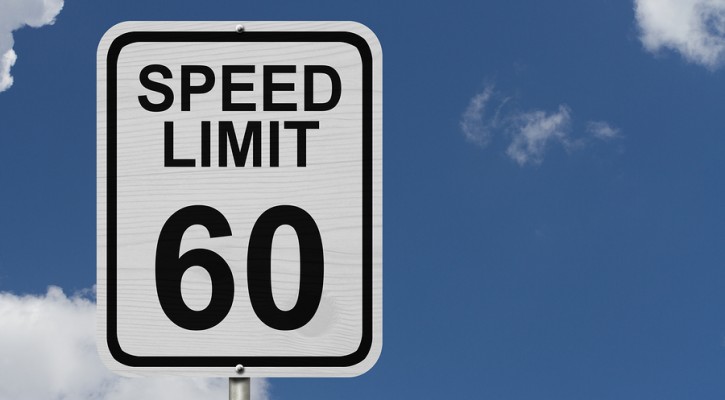Tag Archive: Driving Safety

Aware Of The Dangers, Drivers Text Anyway
November 5, 2014
Even though they say they are aware of the dangers, most drivers still continue to use their cell phones and text while driving according to a new survey from AT&T.
As part of a campaign against texting and driving, AT&T surveyed 1,004 US adults about their driving and texting habits. The survey showed that, while 98 percent said they were aware of the dangers;
- Seventy-five percent admit to texting while driving.
- Two-thirds have read text messages while waiting at a traffic light.
- Twenty-five percent have sent text messages while driving.
- More than one-quarter believe they are capable of safely doing several things at once while driving.
Read more: Survey finds people text and drive knowing dangers

Ask The Traffic School Instructor: Hydroplaning
October 22, 2014
Question: Is there a difference between hydroplaning and skidding?
Answer: While the end result may be the same, the causes of skidding and hydroplaning are different.
Skidding
Skidding is caused by a slick road surface. Your greatest chances for skidding happen when it rains and the most dangerous time is within the first half-hour after it starts to rain. During dry periods, oil and other fluids drip and build up on the roadway. When it starts to rain and there’s a coating of water on the road, all of that oil rises up on top of the water creating a very slick surface. When you hit the brakes, the slick surface may not allow the tires to grip the road. After a heavy rain, all of the oil will be washed off the road.
Other surfaces that can cause skidding are gravel or dirt roads. On those surfaces, the tires aren’t on a flat, even surface. If you can imagine the tire’s surface resting on the small tips of a bunch of rocks rather than having full contact with a flat surface; the tires just don’t have enough grip and that makes it is easier to skid.
It’s important to know what kind of brakes you have on your car. If you have standard brakes, don’t hit the brakes when you start to skid. That can make matters worse. Just take your foot off the gas and concentrate on steering until you pass over the slick spot. If you have anti-lock brakes, they’re made to control your vehicle while skidding by rapidly applying and releasing the brakes multiple times per second. When applying anti-lock brakes, you may feel some fluttering in the brake pedal but that’s normal. Just keep an even pressure on the brakes to stop.
Hydroplaning
Hydroplaning is caused by standing water on the road. As the tires travel through the water, the water is too deep for the tire’s tread to squeeze out all the water and the tires can actually ride up on top of the of the water surface like water skis. At that point, your tires are no longer in contact with the road surface and you’re just along for the ride.
Hydroplaning can happen at speeds as low as 35 mph but it’s most dangerous at speeds above 55 mph. The best way to avoid hydroplaning is to avoid areas of standing water and, if you can’t avoid it, slow down before you enter the water.
If you’re hydroplaning, your tires are no longer in contact with the road. Don’t slam on the brakes! Take your foot off the gas and concentrate on trying to steer until your tires are back in contact with the road.

Most Newborns Put At Risk On First Ride Home
October 16, 2014
Most newborns were put at risk on their first ride home from the hospital by new parents who didn’t know how to install or use their infant seat correctly. Researchers at the Oregon Health and Science University Hospital observed 267 new families as they placed their newborn baby in the infant seat for its first ride home. Using the seat manufacturer’s installation guidelines, the researchers found that most parents either installed the seat incorrectly, used incompatible devices, or failed to secure the harnesses correctly.
Before the blessed event, new parents can receive instructions on correct installation and use of a car seat by a certified car seat technician in their area by visiting the Child Car Seat Inspection Station Locator.
For more information on the study, read: Car Seat Safety: Most Parents Use Car Seats Incorrectly When Driving Newborns Home

Cyclists And New Road Markings
October 8, 2014
Cyclists use bikes as a way to stay in shape, save money or to help protect the environment. Whatever the reason, cycling is growing in popularity and there are more and more bicycles on the roads. Bike sharing is also growing in popularity and bike sharing programs are showing up on major university campuses and in most of the major cities in the US.
Unfortunately, with the increase in cyclists on the road the number of cyclists killed in traffic collisions is also on the rise. In 2012, 726 cyclists were killed and 49,000 were injured in motor vehicle traffic crashes. With both the popularity of cycling and the number of cycling fatalities on the rise, demands are becoming louder to protect cyclists on the road and traffic engineers are looking at new ways to do just that.
Here are a few road markings designed to make the road safer for cyclists that you may already be familiar with or that you may see in the near future.
Bicycle Lanes
The first and probably the most familiar type of lane markings are bicycle lanes. These lanes are set aside for cyclists and they are identified by the image of a cyclist. In some places, the lane may be painted green. No parking is allowed in these lanes. You may enter the lane in preparation for a right turn but only after checking to make sure the lane is clear of cyclists that may be coming up from behind.
Sharrows
Sharrows are lanes that are shared by both cyclists and motorists. Motorists need to be careful and understand that cyclists may move into the center of the lane to avoid obstacles or potholes and they may move to the left in preparation for a left turn. They are marked with the image of a bicycle with two chevrons on top.
Advanced Stop Line
The advanced stop line is painted just before the stop line and crosswalk. This area is also marked with the sharrow image. It allows cyclists to to make left turns or to proceed across an intersection in a safer manner. Motor vehicle traffic must stop at the stop line before the bicycle images.
Bike Boxes
Bike boxes are essentially the same thing as an advanced stop line. They will be painted green. Motorists must stop before the bike box.

Ask The Traffic School Instructor: Speed Limits
September 24, 2014
Question: Do speed limits reduce traffic accidents?
Answer: No, speed limits by themselves can’t save lives. However, drivers who obey the posted speed limits do save lives. Let’s look at the purpose of speed limits and then, at why speed is dangerous.
According to the National Highway Transportation Administration (NHTSA), approximately one-third of all highway traffic deaths are directly due to speeding. Speeding means either going faster than the posted speed limit or traveling too fast for conditions.
What’s the purpose of speed limits?
There’s a popular belief that speed limits are just a way for governments to raise income by handing out traffic tickets but that’s not the case. Speed limits are determined by traffic engineers and set by local or state governments. No one likes traffic jams so, when trying to determine a speed limit, traffic engineers are actually trying to determine the highest safe speed that will allow traffic to move freely. In order to do this, they have to look at a lot of factors including; size of the road, number of lanes, curves, hills, whether the roadway passes through a school zone, shopping district, etc.
Taking all of those factors into consideration, once a speed limit is set, it is the maximum speed allowed during ideal conditions. Ideal conditions mean clear visibility and dry roads. When there is heavy rain, snow or fog, it’s up to drivers to adjust their speed according to conditions. Even if a driver is traveling at or below the speed limit, it’s still possible to get a speeding ticket for driving too fast for conditions.
Why is speed a problem?
Reaction time
The higher the speed, the less time a driver has to react to an emergency situation ahead. It takes between 1 to 1.5 seconds for a driver to react to an emergency situation. That means a driver obeying a speed limit of 45 mph will travel approximately 99 feet before he or she can fully react. A driver traveling 10 mph over the speed limit will travel more than 121 feet in the same amount of time. A lot can happen in that amount of space.
Laws of Physics
The laws of physics come into play also. A basic law of motion states that an object in motion tends to remain in motion – in a straight line. A driver driving too fast in a curve stands a good chance of losing control and running off the roadway because, due to the laws of motion, it’s physically impossible to keep the vehicle on the road. Physics also come into play in a crash. The higher the speed, the greater the crash forces will be.
Reducing traffic Jams
Believe it or not, if everyone were to obey the speed limit and keep a safe following distance between their vehicle and the vehicle ahead, traffic would move much faster and more smoothly. Traffic jams are caused by drivers who are driving too fast and then hit the brakes when they approach a vehicle ahead. This causes traffic behind to hit the brakes and a traffic jam is the result.
You won’t get there any faster by speeding and yes, obeying the speed limit saves lives!
